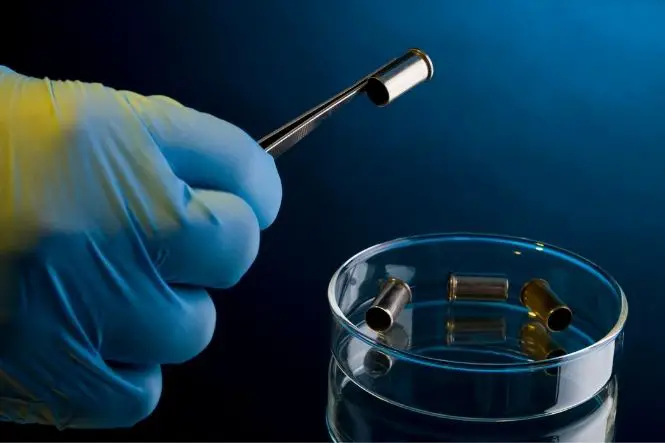Most of us will have heard the term Ballistics at some time or other – more often than not when we have been watching fictionalised accounts of police work on television or in the cinema.
What is Ballistics?
Ballistics is the area of Forensic Science that deals with firearms; how they are used, why they are used and why they are used frequently in the practice of murder.
What many people do not realise is that when a person is shot the wound and the condition of the victim can tell a lot about the nature of the weapon that has been used. Indeed if the weapon has been left at the scene of the crime – which sometimes happens when the perpetrator panics – the weapon itself can go a long way to providing valuable information as to the kind of person who has committed the offence.
Identifying a Weapon
Most guns have their own unique identifying features and even if the gun has not been left at the crime scene many degrees of information can be determined from the bullet, the nature of the wound and any residue that is left around it.
Bullets contain a mixture of gunpowder and cordite and these leave burn marks on the skin of the individual either wounded or killed, they also leave a fine residue on the fingers and hands of the individual firing the gun. These burn marks can signify closeness of the victim to the perpetrator, kind of weapon and also if the weapon has had any modifications made to it. Some weapons have been disarmed by having the firing pins and mechanisms removed but there are individuals who can ‘reactivate’ these weapons for use again.
Also, each weapon’s barrel contains small ligatures and grooves, which, when a bullet is fired from them, make marks on the shell casing, which can be used as a means of identifying the make and model of gun if these shell casings are found at the scene.
It is also worth noting that an automatic – or semi automatic weapon – will expel shell casings as the weapon fires a round whereas a revolver will fire the round but retain the shell casing within the barrel.
Investigating
The field of ballistics is able to identify rifling patterns, marks made by using suppressors (silencers), shell casings, powder burn and many other different areas relating to the use of firearms and the evidence they leave behind.
Indeed most ballistics experts will be able to tell you the particular weapon simply by the sound of it being fired. They will also be able to carry out distance and depth tests which include firing rounds of ammunition into water, sand and other substances to determine how close a person would have to be to receive a life threatening wound from a gun.
Ballistics is a very important part of the world of Forensic Science and much of its evidence is used in criminal proceedings. In some cases the use of ballistics research can prove a link between many different crimes carried out over a lengthy period of time. This is also an important function of the ballistics team as many weapons are passed and sold on between criminals during their life cycle.


